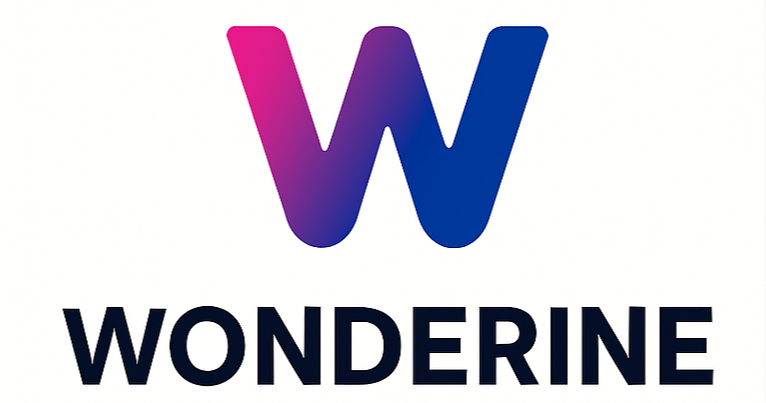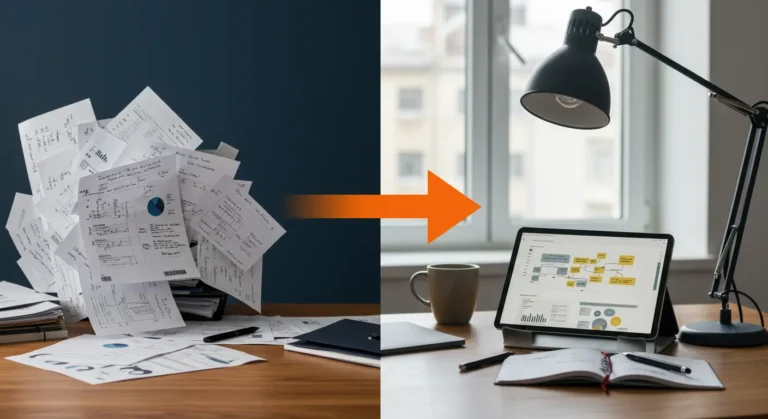
For years, “work-life balance” has been dangled before us like the ultimate career carrot. The ideal? Perfectly compartmentalized lives, where work stays neatly in its box from 9-to-5, and personal life flourishes entirely outside those hours. Sounds lovely, doesn’t it? Almost like a vintage postcard from a bygone era. 🖼️
The reality for most modern professionals, especially in our hyper-connected, hybrid world, is far messier, more fluid, and, dare I say, more integrated. The lines have blurred. We answer emails while waiting for the kids’ soccer practice to end. We take a personal call during a “work-from-home” lunch break. We brainstorm our next big project while on an evening walk.
And you know what? I’m Max Griffin, and I’m here to say that this blurring isn’t inherently bad. In fact, trying to achieve a perfect, rigid “balance” can often lead to more stress and feelings of failure. It’s time we ditched the precarious balance beam act and instead embraced a more empowering and realistic concept: strategic work-life integration. This isn’t about letting work consume your life, or vice-versa. As we’ve explored before, true work-life integration is about thoughtfully and intentionally weaving the strands of your professional and personal worlds together in a way that supports your overall well-being, fuels your creativity, and enhances your performance.
Let’s explore how to master this art.
The Myth of the Scale: Why “Perfect Balance” is Often a Mirage

The very image of “work-life balance” – a perfectly even scale – sets us up for a tough time. Life is dynamic, priorities shift, and urgent demands (both professional and personal) rarely arrive in neat, pre-scheduled packages.
- The Pressure of Perfection:
Striving for a 50/50 split at all times is often unrealistic. Some weeks, a critical project will demand more of your work energy. Other times, a family matter or personal pursuit will rightly take precedence. Chasing perfect equilibrium can lead to constant guilt when one side inevitably (and naturally) outweighs the other. It’s a recipe for feeling like you’re always falling short. - Outdated for the Modern Workflow:
The traditional concept of balance often harks back to an era of clearer delineations between “work time” and “home time.” With flexible schedules, remote work, global teams, and the smartphone in our pocket, those boundaries are inherently more porous. Trying to force old models onto new ways of working is like trying to fit a square peg in a round hole. 🧩 - One Size Fits None:
“Balance” looks different for everyone, and even for the same person at different life stages. A new parent, an entrepreneur launching a startup, someone caring for an aging relative, or a professional deep in a passion project will all have different needs and rhythms. A prescriptive “balanced” template simply doesn’t work. - It Can Discourage Healthy Blending:
Sometimes, a little integration can be highly beneficial. Thinking about a work problem during a relaxed walk might unlock a creative solution precisely because you’re not at your desk. Quickly handling a crucial personal email during a flexible work moment can reduce mental load. A rigid “balance” mindset might view these as failures, rather than smart adaptations.
The pursuit of perfect balance can, ironically, throw us off balance. It’s time for a paradigm shift towards something more adaptable and forgiving.
The Integration Advantage: Weaving, Not Juggling, Your Worlds 🧵

Work-life integration, when done strategically, isn’t about work taking over; it’s about creating a more harmonious and synergistic relationship between all the important parts of your life. It’s about finding a rhythm that works for you.
- Increased Flexibility & Autonomy:
Integration often thrives in environments that allow for flexibility in when and where work gets done. This autonomy can be incredibly empowering, allowing you to attend a child’s school event mid-day and catch up on work later, or to work when you’re most productive, even if that’s outside traditional hours. This is a key theme in many discussions around the future of work, like those found on sources like Forbes or HBR which often discuss fluid work models. - Reduced Stress from “Compartmentalization Failure”:
When you stop fighting to keep things completely separate, you can reduce the anxiety that comes from inevitable overlaps. Giving yourself permission to, for example, schedule a personal appointment during a weekday (and communicate it clearly) without feeling like you’re “slacking” can be a huge mental relief. - Enhanced Creativity & Problem-Solving:
Sometimes, stepping away from a work task and into a personal one (or vice versa) can provide a mental reset that sparks new insights. Our brains often make connections when we’re not actively forcing them. Allowing for these mental cross-currents can be a boon for innovation. - Greater Sense of Wholeness & Authenticity:
For many, work is a significant part of their identity and purpose. Integration allows you to bring more of your “whole self” to all areas of your life. You’re not constantly switching hats so much as wearing a more versatile, comfortable one. This authenticity can be incredibly energizing. - Opportunity to Design Your “Ideal Day” (Realistically):
Integration encourages you to think about how different activities fit together across your entire day or week, not just within rigid blocks. You might find that blending short bursts of focused work with personal errands or exercise actually makes you more productive and fulfilled than trying to cram everything into separate, non-overlapping zones.
The key here is intentionality. Work-life integration without clear boundaries can indeed lead to an “always on” culture, which is precisely what we want to avoid. The “strategic” part means you are the architect of this integration, not a passive recipient of its demands.
Actionable Strategies for Crafting Your Work-Life Integration Symphony 🎶

Alright, let’s get practical. How do you move from the idea of work-life integration to actually living it effectively? This requires conscious effort, clear communication, and some smart strategies.
- 1. Identify Your Non-Negotiables (Both Work & Personal):
- Action: What are the absolute must-dos, must-haves, or protected times in your professional life (e.g., deep work blocks, key meetings) and personal life (e.g., family dinner, exercise routine, dedicated learning time)? List them out. Understanding your core needs is a fundamental part of designing what you might call your personal ‘Career OS,’ creating a system that supports your overall growth.
- Why it Empowers: These become the anchors around which you integrate everything else. Knowing your priorities helps you make conscious choices rather than reactive ones.
- 2. Master “Strategic Blending” & “Intentional Boundaries”:
- Action: Look for opportunities where blending makes sense (e.g., listening to a work-related podcast while commuting or doing chores). Simultaneously, define clear “off-ramps” – specific times when you fully disconnect from work (e.g., no emails after 7 PM, tech-free weekends). Use tools like “focus mode” on your phone.
- Why it Empowers: This gives you the best of both worlds – flexibility where it helps, and protected personal time where it’s crucial. It’s about thoughtful permeability, not a complete wall or a total flood.
- 3. Communicate Your Rhythms & Availability (Clearly & Proactively):
- Action: If you have a flexible schedule, make sure your team understands your general working patterns. Use calendar blocking for personal appointments or deep work. Set expectations about response times, especially outside core hours.
- Why it Empowers: Transparency reduces misunderstandings and helps your colleagues respect your integrated schedule. It also models healthy practices.
- 4. Leverage Technology Wisely (Your Servant, Not Your Master):
- Action: Use tools to manage your integrated life: shared family calendars, task management apps that cover both work and personal projects (if that works for you), and notification settings that filter out noise. Schedule “check-in” times for email rather than being constantly reactive.
- Why it Empowers: Technology can either tether you 24/7 or free you up. Be the one in control. Explore resources on digital well-being, like those offered by the Digital Wellness Institute, for deeper insights.
- 5. Practice “Task Batching” & “Energy Management”:
- Action: Group similar tasks together (e.g., run all your errands in one go, answer emails in dedicated blocks). Pay attention to your natural energy cycles and schedule demanding work tasks for when you’re at your peak, and perhaps more mundane personal tasks for lower energy periods.
- Why it Empowers: This improves efficiency and ensures you’re using your mental and physical energy optimally across all your responsibilities.
- 6. Regularly Review & Adjust Your Integration Strategy:
- Action: What works today might not work next month or next year. Set aside time (e.g., monthly) to reflect on how your current integration strategy is feeling. Are you feeling energized or drained? Are your priorities being met? What needs to change? This kind of regular audit is crucial for maintaining any effective personal system.
- Why it Empowers: Life changes, so your strategies must too. This iterative approach ensures your work-life integration remains supportive and effective over time.
Crafting your work-life integration is an ongoing symphony, not a one-time composition. It requires you to be the conductor, actively guiding the different sections to create a harmonious whole.
FAQ: Fine-Tuning Your Work-Life Integration
Q1: Won’t “integration” just mean I’m working all the time?
A: That’s a common fear, but strategic integration is the antidote. It’s precisely about setting intentional boundaries alongside flexible blending. The goal isn’t to be “always on,” but to have more control over when and how you engage with different aspects of your life, ensuring protected personal time is a key part of the design.
Q2: How do I do this if my company culture is very rigid about “hours”?
A: This is tougher, but you can still apply some principles. Focus on maximizing your efficiency within work hours to protect your personal time more fiercely. Communicate proactively about any necessary flexibility (e.g., “I need to leave at 4:30 today for an appointment, but I’ll be back online this evening for an hour if needed”). Advocate for small shifts in team norms where possible. Sometimes, demonstrating responsible flexibility can inspire change.
Q3: What if my partner or family has different expectations about work-life separation?
A: Open communication is key. Discuss your needs and theirs. Explain why you’re aiming for integration and what it looks like in practice (including your commitment to dedicated family/personal time). A shared understanding and agreed-upon boundaries within the household are crucial for successful integration.
Q4: Is it okay if I actually prefer a fairly strict separation between work and personal life?
A: Absolutely! “Integration” doesn’t mean everything must be blended. If a clearer separation works best for your personality, your role, and your life stage, then that is your effective strategy. The core idea is to be intentional and find what genuinely supports your well-being and performance, rather than chasing an external ideal.
Q5: How can I avoid feeling guilty when I’m focusing on personal life during “traditional” work hours, even if my schedule is flexible?
A: Reframe it. If your work is getting done, you’re meeting your responsibilities, and you’re communicating effectively, then you’re using your flexibility as intended. Focus on outcomes, not just hours logged. Remind yourself that this flexibility allows you to be more present and less stressed in both areas of your life, ultimately making you more effective overall.
Your Life, Your Design
The quest for a fulfilling professional life and a rich personal life doesn’t have to be a zero-sum game. By moving beyond the restrictive myth of “perfect balance” and embracing the empowering potential of strategic work-life integration, you can design a way of living and working that feels more authentic, sustainable, and joyful. You become the architect of your days, weaving together your ambitions and your well-being with skill and intention.
What’s one small adjustment you could make this week to better integrate your work and personal life in a way that feels genuinely supportive? Perhaps it’s scheduling a mid-day walk, protecting an evening for a hobby, or batching your emails.
Building this kind of intentional life is a core theme we explore in ‘The Horizon Line.’ If you’re ready to swap the stress of juggling for the art of weaving, and to approach your career and life with more clarity and confidence, I encourage you to subscribe. Let’s craft fulfilling futures, together. You’ve got this! 👍




